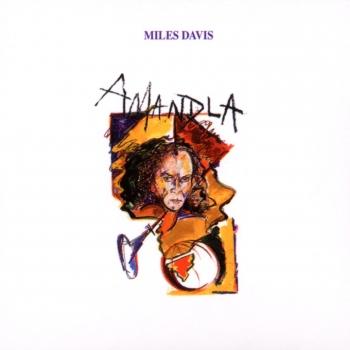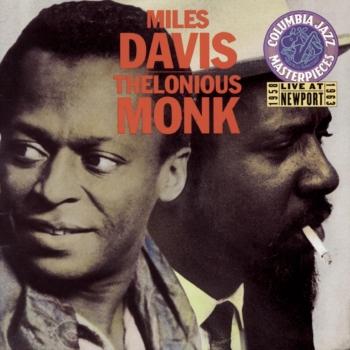
Quintet / Sextet Miles Davis
Album info
Album-Release:
1956
HRA-Release:
17.03.2016
Album including Album cover Booklet (PDF)
I`m sorry!
Dear HIGHRESAUDIO Visitor,
due to territorial constraints and also different releases dates in each country you currently can`t purchase this album. We are updating our release dates twice a week. So, please feel free to check from time-to-time, if the album is available for your country.
We suggest, that you bookmark the album and use our Short List function.
Thank you for your understanding and patience.
Yours sincerely, HIGHRESAUDIO
- 1 Dr. Jackle 08:55
- 2 Bitty Ditty 06:37
- 3 Minor March 08:18
- 4 Changes 07:11
Info for Quintet / Sextet
„Less heralded than their collaboration with Thelonious Monk (as documented on Bags' Groove and Miles Davis and the Modern Jazz Giants), this August 5, 1955 session with vibraphonist Milt Jackson was Davis' last all-star collaboration before the formation of his first classic quintet. It marked a farewell to an older generation of acolytes and fellow travelers; Davis was entering a new era of leadership and international stardom, and generally he would only record with his working groups. Quintet/Sextet is notable for two compositions by Jackie McLean: 'Dr. Jackle' and 'Minor March' (it appears on his famous 1959 Blue Note date New Soil as 'Minor Apprehension'). The former is a Charlie Parker-ish line featuring a masterful Milt Jackson symposium on the blues -- Davis' typically lyric approach, a tart, spacious flight from McLean, and a soulful, dancing Ray Bryant. The latter is a mysterious minor figure with jabbing rhythm breaks and a joyous bridge that recalls 'Tempus Fugit.' McLean's vaulting cadences and fervent cry anticipate the rapture of his mature style, and Bryant takes a harmonically adventuresome solo. Elsewhere, the group digs into the Bud Powell-like changes of Ray Bryant's low, slow 'Changes' (over the rock-solid groove of Percy Heath and Art Taylor), and the quirky harmonies and angular melodies of Thad Jones' 'Bitty Ditty.' 'Changes' inspires a lovely muted statement from Davis, and illustrates Bryant's unique blend of blues, sanctified gospel, and bebop. Davis and Jackson combine for pungent voicings on the head to 'Bitty Ditty,' then demonstrate their elegant mastery of harmony and swing. Both are inspired by the shape of Jones' line, and are completely unfazed by its intricacies.“ (AMG)
'...packs more excitement and inspiration into half an hour than a good deal of the more substantial and feted Davis/Coltrane sessions that would follow....vibraphonist Milt Jackson is in unusually aggressive mood and Davis himself is at his sweetest.' (Q Magazin)
Miles Davis, trumpet
Milt Jackson, vibraphone
Jackie McLean, alto saxophone
Ray Bryant, piano
Percy Heath, bass
Art Taylor, drums
Recorded August 5, 1955 at Van Gelder Studio, Hackensack
Produced by Bob Weinstock
Digitally remastered
Trumpeter Miles Davis grew up in East St. Louis, Illinois, just across the river from St. Louis, Missouri. His parents were affluent, and had the means to support his musical studies as a boy. He began playing the cornet at age nine, and received his first trumpet at around twelve or thirteen. He studied classical technique, and focused mainly on using a rich, clear tone, something that helped define his sound in later years.
As a teenager, he played in various bands in St. Louis, which was rich with jazz, as big bands often stopped there on tours throughout the Midwest and southern states. The most important experience he had was when he was asked to play in the Billy Eckstine band for a week as a substitute. The group included Charlie Parker, Dizzy Gillespie, and Sara Vaughan. After playing with these stars, Davis knew he had to move to New York to be at the heart of the jazz scene.
In Pursuit of Parker:
In 1944 Davis moved to New York City where he had earned a scholarship to study trumpet at the Juilliard School of Music. Upon arriving however, he sought after Charlie Parker, and meanwhile spent all of his time in jazz clubs listening to bebop. He was transfixed on the music, and grew utterly bored with his classical studies. After less than a year at Juilliard, he dropped out and tried his hand at performing jazz.
Although not particularly stunning, his playing was good enough to finally attract Charlie Parker, and Davis joined his quintet in 1945. He was often criticized for sounding inexperienced, and was compared unfavorably to Dizzy Gillespie and Fats Navarro, who were the leading trumpeters at the time. Both boasted stellar technique and range, neither of which Davis possessed. In spite of this, he made a lasting impression on those who heard him, and his career was soon set aloft.
Cool Jazz and a Rise to Fame:
Encouraged by composer and arranger Gil Evans, Davis formed a group in 1949 that consisted of nine musicians, including Lee Konitz and Gerry Mulligan. The group was larger than most bebop ensembles, and featured more detailed arrangements. The music was characterized by a more subdued mood than earlier styles, and came to be known as cool jazz. In 1949 Davis released the album Birth of the Cool (Captiol Records).
Change of artistic direction became central to Davis’ long and increasingly influential career. After dabbling in hard bop as a leader on four Prestige recordings featuring John Coltrane, he signed with Columbia records and made albums that featured Gil Evans’ arrangements for 19-piece orchestra. These were Miles Ahead, Porgy and Bess, Sketches of Spain, and Quiet Nights. He rose in popularity with these recordings, in part due to his signature sound, which he often enhanced by using a Harmon mute.
Kind of Blue and Beyond:
In 1959 Davis made his pivotal recording, Kind of Blue. It was a departure from all of his previous projects, abandoning complicated melodies for tunes that were sometimes only composed of two chords. This style became known as modal jazz, and it allows the soloist expressive freedom since he does not have to negotiate complex harmonies. Kind of Blue also featured John Coltrane, Cannonball Adderley, and Bill Evans. The album is one of the most influential in jazz, and is Columbia Records’ best-selling jazz record of all time.
In the mid 1960s Davis changed directions again, forming a group with Herbie Hancock, Wayne Shorter, Tony Williams, and Ron Carter. This group was known for the excellence of each individual member, and also for its unique performance approach. Each night the tunes would sound different, as the musicians would sometimes only loosely adhere to the song structures, and often transition from one right into the next. Each player was given the chance to develop his solos extensively. Like all of Davis’ previous groups, this quintet was highly influential.
Late Career:
Despite health problems, drug addiction, and strained personal relationships, Davis continued to play, changing his approach with each new project. In the late 60s and 70s, he began to experiment with electronic instruments, and grooves that were tinged with rock and funk music. Two famous recordings from this period are In a Silent Way and Bitches Brew. By the time the 1980s rolled around, Davis was not only a jazz legacy, but a pop icon, whose music, persona, and fashion style were legendary.
Davis died in 1991, as perhaps the most influential jazz artist ever. His vast body of work continues to be a source of inspiration for today’s musicians. (Jacob Teichroew, About.com Guide)
Booklet for Quintet / Sextet







































